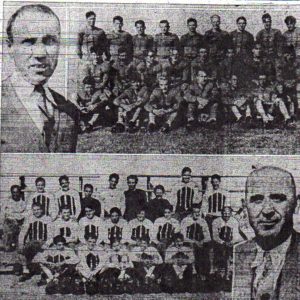
Now wait just a grape-pickin’ minute!
Students at Escondido High were up in arms.
They did not cotton to the term Grape Pickers or its use to describe the school’s athletic teams, although the wine-making fruit held agricultural sway in the area and the city had hosted a Grape Day Festival since 1908.
The students wanted a tough, masculine mascot.
They voted to adopt the cougar, which had been known to prowl the mountain ranges near the valley community for centuries.
The school also made a request of sports writers to refrain forthwith from referring to Grape Pickers in print.
Perhaps coincidentally, football at the second oldest football-playing school in the County finally was earning some respect.
The Cougars, paced by future major league baseballer Pete Coscarart; Tom Luscardi, and future NFL player Ed Goddard, posted a 9-2 record although defeated by El Centro Central in the CIF minor division championship game.
THREE-WAY TIE
Along the way, coach Harry Wexler’s North County squad tied with Coronado and Grossmont for the Southern Prep League championship.
Escondido defeated Grossmont, 31-0, and Grossmont topped Coronado, 12-7, but Coronado upset the Cougars, 20-6.
The teams were 3-1 in final standings and followed an interesting path from there.
A three-hour meeting of representatives from the three schools was held Monday, Nov. 12, at the Stanley Andrews store in downtown San Diego.
A league rule stipulated that a playoff would have to be played Tuesday, Nov. 13, or Friday, Nov. 15.
In the scrambling, seemingly haphazard manner in which the CIF Southern Section selected playoff teams, it appeared that two clubs from the Southern League were eligible for the postseason.
According to The San Diego Union, Coronado coach Amos Schaefer said he’d play only if Grossmont agreed to enter the playoffs.
Grossmont coach Jack Mashin bailed, citing a number of injuries that depleted his squad would preclude a game the next day.
Mashin and Schaefer, after a three-hour back and forth, finally conceded the championship to Escondido and its representative Martin Perry, and cited curious logic:
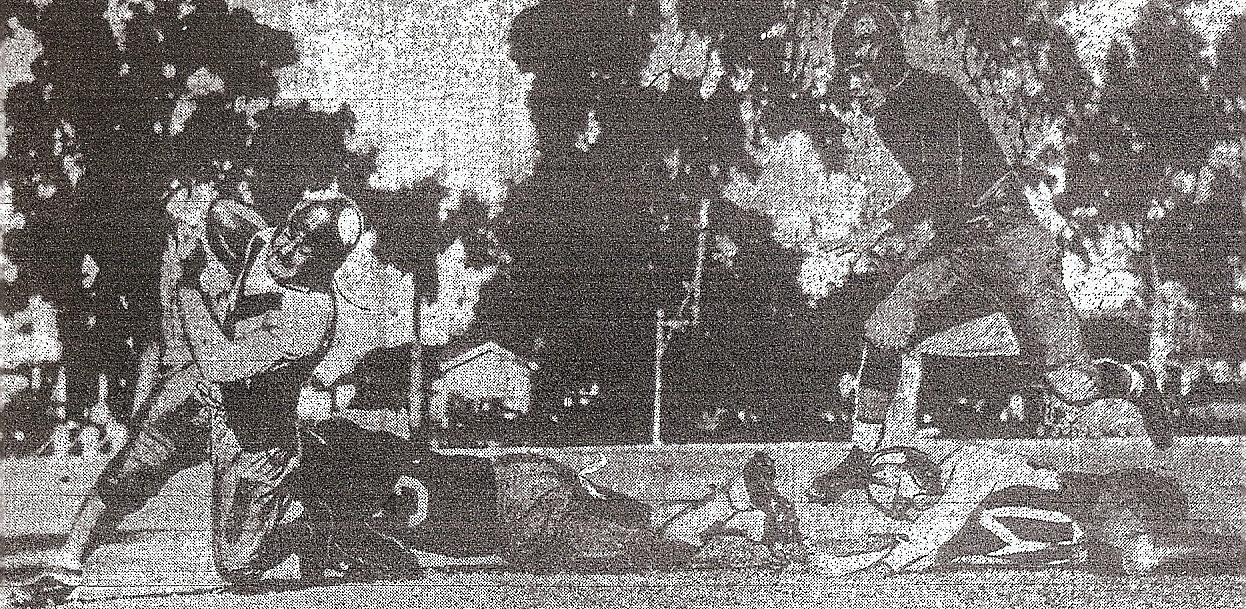
Grossmont had beaten Coronado the previous Friday and even if Coronado would defeat Escondido again, the Islanders’ loss to Grossmont would overshadow a win over Escondido.
That’s the way it was reported in The San Diego Sun.
ORANGE PEELED
The Cougars routed Orange County champion Orange, 52-0, that Friday in their final, regular-season game. But a pregame story in The Sun declared that the matchup “may be considered as one of the Southern California interscholastic Federation, Unit B playoff contests.”
The disclaimer notwithstanding, the playoffs were scheduled to begin the following week, when Escondido was to play the inaugural City League champion, Point Loma.
It gets more confusing.
The story in The Sun added, “If pairings should so fall that Orange and Escondido would logically be paired up in second round playoffs the score of tomorrow’s game in all probability would be considered instead of (Escondido and Orange) playing another game.”
NEW DEAL
Always looking for possible revenue streams, the struggling federation this season had divided its members by leagues into Major Division and geographic Northern Minor and Southern Minor.
Teams from the Coast, Cirtrus Belt, Foothill, Orange, Ventura, Bay, and San Luis Obispo leagues were placed in the Major Division.
Teams from the San Diego City League, Southern Prep, and Imperial Valley circuits would align in the Southern group. Teams from the Riverside, San Gabriel Valley, Ventura Minor, and Tri-County loops would comprise the Northern group.
The increased playoffs and more numerous pairings didn’t “fall” to a Cougars-Orange showdown.
Escondido met Point Loma and moved on with a 13-6 victory. Next up was Banning, the Riverside County champion, and the Cougars sent the Broncos home, 46-0.
The win over Banning set up a second match with El Centro Central, beaten, 6-0, by the Cougars early in the season.
Maybe it was the long postseason, but even a partisan home crowd couldn’t help the Cougars, who dropped a 20-6, championship game decision to the team from Imperial Valley.
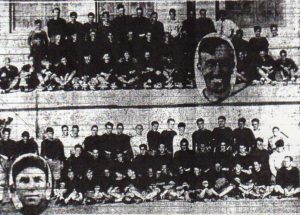
THE WEXLER WAY
Coach Harry Wexler brought the Escondido program out of the depths in which it resided for most of the previous 30 years. His teams posted a 57-32-11 record over 10 seasons from 1928-37.
Escondido’s record under five coaches from 1920 until Wexler was hired was 10-41-5.
Wexler’s .624 winning percentage is bettered at Escondido only by the standard of the legendary Bob (Chick) Embrey, who was 144-66-4 (.682) from 1956-77. Paul Gomes was 59-37-7 (.607) from 2001-09.
Local merchants, so taken with the Cougars’ success, closed their stores in order to see the game with rival Oceanside.
NO, NOT ME
Did Wexler, a Washington State Cougar in his undergraduate days, have something to say about the change in nicknames?
School officials said Wexler did not suggest or have anything to do with the switch.
Wexler undoubtedly had something to say about Goddard’s future.
The sophomore fullback went on to an all-America career at Washington State and was the second player selected in the 1937 NFL draft.
A Los Angeles Times reporter was so taken with Goddard’s running in a victory over USC that he coined Goddard the “Escondido Express.”
GODDARD GOES FIRST
There had been a handful of San Diego-area preps who had played professionally, notably Russ Saunders of San Diego High with the 1931 Green Bay Packers, but Goddard was the first to be drafted in the NFL.
Goddard played two seasons, 1937 and, ’38, with the Brooklyn Dodgers and Cleveland Rams and then went into teaching and coaching. He was an assistant coach on the 1950 Fullerton High staff. The Indians upset San Diego, 20-19, in the playoffs.
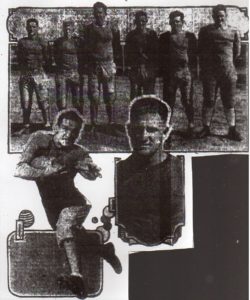
THEY ALL REMEMBERED
Before they passed, many retired San Diego High coaches and staff shook their heads when they spoke, often, of the game coach Hobbs Adams’ Hilltoppers lost at Long Beach Poly in 1930.
Estimated attendance at Burcham Field was 15,000 persons for the game that decided the Coast League championship and the league’s playoff representative.
Another 4,000 was said to have been turned away.
Hundreds of Hilltoppers boosters were there. Radio station KSUN in San Diego offered a play-by-play of the contest. San Diegans also were able to pick up a Long Beach radio station broadcast on San Diego station KGER 1350.
The Fox Theater commissioned a special cameraman to take film of the game and begin a one-week showing the day after the Thanksgiving tussle.
LUCK O’ THE JACKRABBITS!
The Jackrabbits won, 14-8, and breezed to the Southern California upper division championship.
–San Diego had 15 first downs, Poly 1.
–Long Beach’s longest gain on a running play was 4 yards.
WRITER’S LAMENT
The game story lede, in part, as sent by The San Diego Union reporter Charles Byrne:
“Although outclassed—and outclassed badly—Long Beach Poly capitalized on the ‘breaks’ of the game to capture the Coast League championship in one of the weirdest prep school battles ever witnessed in Southern California.”
Poly’s one first down was on a pass play that turned into a 50-yard touchdown.
A Cotton Warburton punt from the end zone was blocked and Warburton recovered for a Poly safety. Long Beach led, 8-0.
The Jackrabbits went up 14-0 after a lateral from Warburton to Ted Wilson was knocked in the air and strayed into the hands of another Poly defender, who ran 85 yards.
San Diego got on the board in the fourth quarter. Cecil McElvain intercepted a Poly fumble and raced 20 yards to make the score 14-6.
King Hall blocked a Poly punt out of the end zone for another safety.
Poly went on to defeat Redondo Beach Redondo Union, 20-3, for the championship.
ROAD WARRIORS
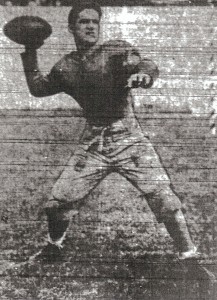
Thirty-three of the 40-man San Diego squad boarded a 5:15 p.m. train on Thursday for an all night ride to Phoenix.
After “resting up” the Cavers dropped a 22-20 decision to Phoenix Union and hustled to the depot to catch the last train at 10:30 Friday night.
The team arrived back in San Diego Saturday morning.
The sluggish Hilltoppers trailed, 15-0, at halftime but rallied as Ted Wilson scored two touchdowns and Cotton Warburton added another.
SOUTHERN GOES ALL COUNTY
The fledgling City League, numbering Point Loma, La Jolla, San Diego High’s Reserves, and the new Hoover High, meant that the Southern Prep, originally known as the County League, would become just that, a league of County squads.
The Southern Prep now listed Coronado, Sweetwater, Oceanside, Escondido, Mountain Empire, and Julian. The last two did not field football teams but competed in other sports.
HILLTOPPERS’ BIG THREE
At one point in the preseason, San Diego coach Hobbs Adams had five, 11-man squads practicing daily.
Adams decided that assistant coach Mike Morrow would handle a group called the “Reserves”, sometimes referred to as the “Seconds”, and Glenn Broderick would continue as coach of the B’s.
Broderick’s B team was the defending Southern California champion, but the Coast League dropped its B playoffs this season
The Little Hilltoppers forged a free-lance schedule and again prevailed in Southern California.
The B team defeated Santa Monica, 25-6, in the preliminary game to Long Beach Poly’s 20-3 victory over Redondo at the Los Angeles Coliseum.
As was the practice in track and field and other sports, with A, B, and C squads based on “exponents,” B footballers’ eligibility was determined by their height, weight, grade, and age.
The Reserves served as sort of a varsity minor league. Players shuttled back and forth between the teams.
LIGHTS…ACTION….
The date was Sept. 27, 1930, when St. Augustine and Grossmont took the field in the first high school night football game under lights in San Diego County.
One day after San Diego State had played the Marine Corps Recruit Depot on the tanbark Navy Field, St. Augustine defeated the Foothillers, 25-0.
San Diego coach Hobbs Adams took his team to Navy Field for a workout later in the season before the Hilltoppers boarded a train for a game in the north.
The Navy Field site at the foot of Broadway and adjacent to Pacific Highway and Harbor Drive would be renamed Lane Field as home of the Pacific Coast League San Diego Padres later in the decade. The Padres’ franchise was moved from Hollywood in 1936. The owner of the team was Bill Lane.
San Diego High’s Class B team represented the school in its first night-time venture when the Little Hilltoppers traveled to Brawley.
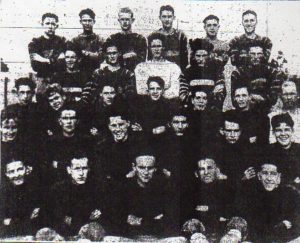
HOOVER, THE SCHOOL, ASCENDS
September was a historic month.
On Sept. 3, Herbert Hoover High, 4474 El Cajon Blvd., in East San Diego, opened its doors to almost 1,000 sophomore and junior students. There was no senior class.
Known as the Engineers or Presidents, students opted for school colors of Red and White.
Their teams eventually became the Cardinals.
Coach John Perry, who had posted a 52-14-5 record at San Diego from 1920-26 but had left coaching to pursue additional educational credentials, came out of retirement to lead the Eastsiders.
Perry’s first call resulted in 88 candidates, a remarkable turnout, said The San Diego Union, in that there were less than 500 boys in the school.
A total of 130 were out at San Diego High, 50 at Grossmont, 75 at Army-Navy, and 35 at St. Augustine.
ALSO DEBUTING
San Diego had a new practice field north of the City Stadium but the rough, dirt layout prohibited intrasquad scrimmages until the team moved into the stadium and its turf playing surface.
The football team and student gym classes soon would access the stadium on a daily basis throughout the school year after an agreement was reached during a meeting of the Balboa Park Board and City Schools big shots.
For the next 30-odd years, it was easy to identify the practice field site. Whenever news media photos were taken of the San Diego High players, the Balboa Naval Hospital would loom in the background.
The new, Crosstown Freeway of Interstate 5 opened in 1963 and changed the practice landscape, as the baseball field was reconfigured. Cavers teams continued to practice football there.
SIGNS OF THE TIME
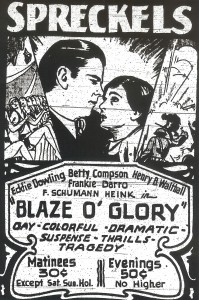
La Mesa was approved for daily mail delivery after the community’s Chamber of Commerce voted to increase the number of sidewalks and paving as required by the U.S. Postal Service.
The government agency also had required La Mesa to improve street lighting and provide a modern numbering system for residential and business addresses.
AGGRAVATED BATTERY
Interscholastic athletics at Fresno Edison Technical were suspended until the end of the school year June 1, 1931.
Two Technical students were charged with assaulting game referee H.L. Rowe, a resident of Madera who ruled a touchdown in favor of Kingsburg with two minutes left in the game that gave Kingsburg a 6-0 victory and setting off a riot.
About 30 Technical students were involved in the beef at the game and for creating another disturbance that night.
FOOTBALL HUB
Thirty-one former San Diego-area gridders were listed on the rosters of 12 universities.
Twelve players each were from San Diego High and St. Augustine. Coronado had four.
The schools included USC, Stanford, California, and Oregon of the Pacific Coast Conference, plus Idaho, Tulane, Kansas, Tulsa, St. Mary’s, Santa Clara, Regis of Denver, and Columbia of Seattle.
TRUE GRID
Hobbs Adams closed practices and locked gates at City Stadium as his team prepared for visiting Long Beach Wilson and Santa Ana…the Bruins were coached by former San Diego High star Rockwell (Rocky) Kemp, Santa Ana by former Memorial Junior High and San Diego High coach Gerald (Tex) Oliver…heavy rain forced the Hilltoppers indoors to their new gymnasium the Thursday before the Alhambra game…Grossmont had turf for the first time…”We’ve been working for a turf field for about six years, and now that we have one, it’s probably the best in the County,” said Foothillers coach Jack Mashin…Ramona, which opened in 1893, continued the idea fielding a football team… coach Harold Roberts was in place, but the Bulldogs wouldn’t be on the field until 1938…Gene Miller got San Diego on the scoreboard against San Bernardino by drop-kicking a 38-yard field goal…Oceanside was constructing an athletic facility that could hold three full-size football fields, four tennis courts, and a quarter-mile oval for track and field meets…one local writer described Grossmont as “the back country school.”…flags flew in St. Augustine’s 64-0 win over Brawley…the Saints were penalized 165 yards and the Wildcats 105…the same Brawley squad dropped a 26-0 decision to the San Diego B team the next week…Cotton Warburton was the only athlete from the area to earn all-Southern California honors…Warburton was on the first team for the second year in a row.

Rick — great story about the Grape Pickers and rare photo of Harry Wexler. Having grown up in Escondido, some of the early-day triumphs of the school seems to have been lost along the way.
One thing about coach Wexler; he certainly could have been described as flamboyant! Maybe from the same mold as Glen Forsythe of Ramona.
One of my good friends was Harry’s grandson … he was a trip! :-)
Thanks for writing, Rob. I met Harry Wexler in 1960, when colleague Roger Conlee and I drove to Escondido the week the Cougars were preparing to play Point Loma for the first San Diego Section championship. Wexler must have been in his late sixties or early seventies. He was jovial and conversationaL. We also visited Cougar end Denny Snyder at Palomar Hospital. Snyder had taken an elbow in the jaw from San Diego’s Lou Scott the previous week and sustained a concussion.
I actually like athletic nicknames that reflect an area’s industry. Packers, Steelers, Cornhuskers, Oilers, for example. If Escondido High had retained Grape Pickers, the “Grape” would have dropped along the way and they’d be known today as the Escondido Pickers, which would be kinda cool.
Good point. Speaking of same, Orange High in the early years of the 20th century was known as the “Orange Pickers”. They became the Panthers.